The impression for those who have come to Nam Xuan Lac Species and Habitat Conservation Area ( Bac Kan ) is the feeling of excitement, overwhelmed by the majesty of nature, mixed with surprise, surprise at the vestiges from the French colonial period deep in the old forests. Nam Xuan Lac carries within itself a mystery, an attraction that has not yet been awakened and explored.

Conquer the jungle
We started our trip from Bang Lung town, Cho Don district. The town is located in a rather large valley. The special thing about this mountain town is an underground water point that gushes out a clear stream of water, which is rumored to originate from the Phia Boóc range and many high mountain ranges here. Highway 254 is as wide as a soft silk strip, hanging halfway up the hills. Dao and Tay villages are looming in the distance, dotted with bright red cotton flowers burning against the early morning sky.
It takes about five hours to get to Nam Xuan Lac Species and Habitat Conservation Area from Hanoi . Difficulties only come to the conquerors when they step into the old forests. The group has two special “tour guides”, Ms. Ma Thi Na, Standing Deputy Secretary of the District Party Committee and Mr. Ma Doan Khang, Vice Chairman of the People’s Committee of Cho Don District.
The headquarters of the Management Board of the Reserve is nestled under the canopy of the old forest. Right behind the headquarters are huge natural trees, vines as big as wrists like pythons hanging in the air, just looking at them is enough to see the true "quality" of the reserve. Director of the Reserve Luong Quoc Hai said there are nine routes to explore and conquer the Nam Xuan Lac forest. With the advice of the local "tour guides", our group chose the route Cau Muc-Dau Cap Binh Trai-Phja Khao Intersection.
Before leaving, we went to burn incense at Tien Son Temple at the foot of the White Mountain (called Phja Khao in the Tay language). This is almost a natural thing for those who come to this mysterious land for the first time, where there are countless relics associated with the fate of miners who died during the colonial period.
Ban Thi is a mining area, home to the largest lead-zinc mine in Vietnam. Since 1909, the French colonial government has brought machinery, tunnels, ore winches, and railways to this remote, isolated land. To this day, the Ban Thi mine still supplies tens of thousands of tons of ore to the country each year.
Our group has Mai Hoa. She is only 22 years old, born in Hanoi, and has been living and studying in California (USA) for over 10 years. To evaluate Nam Xuan Lac, there is nothing more authentic than the feelings of Mai Hoa, a Vietnamese expatriate who has returned and set foot here for the first time.
Mai Hoa wrote, “It would be a lie to say that the road to the top of Phja Khao is not difficult. Winding around the mountainside, with rocks swaying on rocks, the road was built almost exclusively for mining purposes, with only enough room for one car. Sitting on the car, swaying along the bumpy road, with traces left by trucks, I was both a little scared and deeply felt the flavor of the bowl of roasted duck pho I had eaten this morning. Going up the mountain is definitely not for those who are full.
The dry stone cave was cool and refreshing in the humid weather. The scent of magnolia flowers mixed with the smell of mud wafted past the tip of the nose. This was a water tank, that was the bare steel frame left over from the sophisticated ore-carrying system built during the French rule - most of which had been dismantled to use as raw materials for the Viet Bac campaign in 1947. A dark rusty brown color lurked behind the treetops that had grown and flourished for more than a hundred years. The age of these steel plates must be comparable to the nails and screws on the Long Bien bridge.
The road through Nam Xuan Lac forest from Ban Thi to Xuan Lac commune is about 20 km long, enough to make everyone who enters it sweat. The French built a road with boulders through the forest. The road was both for the French to ride horses for pleasure and for horses to carry ore. After hundreds of years, it still exists, although most of it has been overrun by grass and trees.
On the stone-lined path in the deep forest, Mr. Luong Quoc Hai, Director of the Management Board of the conservation area, shared that this French colonial-era trail system alone is dozens of kilometers long. The road surface is flat, the negative slope is paved with solid stone, and despite being hundreds of years old, it is still quite intact. The mossy green rocks, arranged tightly together without mortar, still stand tall after centuries.
Along the way, hundreds of years old trees proudly, majestically, curiously “looked” down at us, observing the group of people who were engrossed in exploring. Nam Xuan Lac Forest is a paradise of ironwood, so it is not difficult to encounter giant tree trunks on the way to conquer. Four to five people holding hands and hugging around the ironwood tree trunk still could not reach it, only then did we realize how small humans are in front of nature. Our group had to look up countless times until our necks were sore, our hats fell off to admire from the base to the top of the giant tree trunks.
Awaken your potential
Having patrolled the forest countless times, despite her small body, the female ranger Mung Thi Hoai still nimbly climbed over rocks to lead us. The men were out of breath after a few kilometers of forest road, their legs were tired, but because they were “afraid” of being criticized by the female ranger, they tried to follow.
As he walked, Hoai told in detail that the Reserve covers an area of over 4,155 hectares, of which the strictly protected area covers 2,552 hectares. The Reserve has 653 species of higher plants belonging to 440 genera, 142 families, and five phyla, of which 54 are rare species, 50 species are listed in the Vietnam Red Book, and nine species are listed in the IUCN Red List.
After hours of struggling with the road, we finally “reached” the location of the ore winch system on the mountain top. After hundreds of years, the iron pillars still stand tall in the wind and rain. It is an indescribable feeling for those who come here when witnessing the remnants of the colonial regime. The reddish-brown iron pillars have rusted, but there are still hanging cables hanging loosely across the mountain like ropes left by the lumberjacks on the mountain.
I had a feeling that with just a little repair, this cable car system would be back to working. And instead of carrying ore, this system would carry tourists, how interesting that would be. Our train of thought was interrupted when Ms. Ma Thi Na, Standing Deputy Secretary of the Cho Don District Party Committee, called out. In her hand she held a piece of broken terracotta tile, on which the French writing was still clearly printed.
She said, according to many documents and stories from the elders in the area, in the past, the pillars of this cable winch system had a very solid roof covered with tiles, now only the steel pillars and winch wire remain. During the resistance war against the French, many Central facilities moved to Ban Thi commune, including the military weapons factory. Our army and people used part of the steel from this cable winch system to produce weapons for the resistance war.
After an hour of walking through the rocky mountain edge, we reached the core area, where the giant ironwood trees were becoming more and more numerous. Standing in front of an ancient ironwood tree, female ranger Nong Thi Thuan introduced that in the reserve there were about 2,000 large ironwood trees, each one carefully numbered.
In addition to the wonders of nature, in the heart of Nam Xuan Lac reserve there are also countless historical relics and mysteries associated with the struggle for national independence.
Currently, in Ban Thi commune, there are still many historical and cultural relics, such as: The foundation of the Central Military Factory on the top of Phja Khao Mountain. In 1947, the Central Government chose this location to establish the Military Research Department led by Professor Tran Dai Nghia.
Phja Khao village was also the location of the Central Kindergarten during the resistance war from 1948-1954. This is also where comrade Pham Van Dong's family lived during the resistance war. In Hop Tien village and Ban Nhuong village, the Ministry of Finance lived and worked from February 1947 to 1953. This is also the location where the Government established the first Vietnamese money printing factory... Therefore, conquering Nam Xuan Lac is not only about breaking the limits of one's climbing ability, visitors also have the opportunity to "discover" many other interesting things.
However, for decades, like the ore winch system, the stone-stacked roads have been lying quietly in the deep forest, and the potential for eco-tourism and history in Nam Xuan Lac has also been “asleep”. The stone-stacked roads have only been visited by forest rangers and local people.
In early 2024, Bac Kan province approved the Ecotourism, Resort and Entertainment Project in the Nam Xuan Lac Species and Habitat Conservation Area. The total estimated investment of the project is more than 330 billion VND. There will be five ecotourism, resort and entertainment destinations and nine tourist routes built and developed in Nam Xuan Lac. According to the leaders of Cho Don district, there have been investors coming to learn, research and raise the issue of investing in tourism development here. That is truly a positive signal and Nam Xuan Lac is "stirring" to wake up.
Source


![[Photo] Panorama of the memorial service for former President Tran Duc Luong](https://vphoto.vietnam.vn/thumb/1200x675/vietnam/resource/IMAGE/2025/5/25/d33968481f21434fa9ed0df48b9ecfa9)
![[Photo] Memorial service for former President Tran Duc Luong in Ho Chi Minh City](https://vphoto.vietnam.vn/thumb/1200x675/vietnam/resource/IMAGE/2025/5/25/c3eb4210a5f24b6493780548c00e59a1)
![[Photo] President Luong Cuong receives Lao Vice President Pany Yathotou](https://vphoto.vietnam.vn/thumb/1200x675/vietnam/resource/IMAGE/2025/5/25/958c0c66375f48269e277c8e1e7f1545)


![[Photo] Prime Minister Pham Minh Chinh meets the Vietnamese community in Malaysia](https://vphoto.vietnam.vn/thumb/1200x675/vietnam/resource/IMAGE/2025/5/25/1f11d1256d7745a2a22cc65781f53fdc)
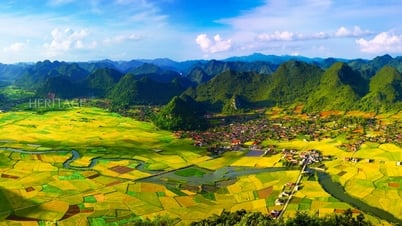










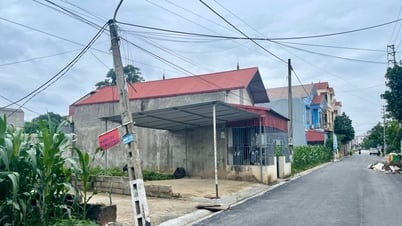















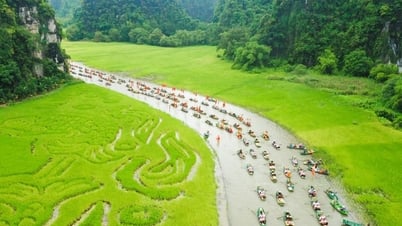

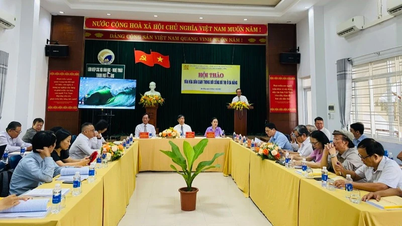











































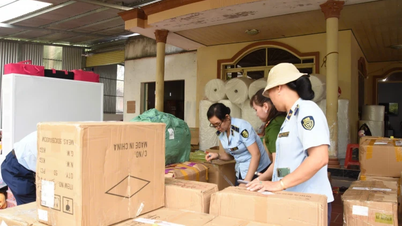













Comment (0)